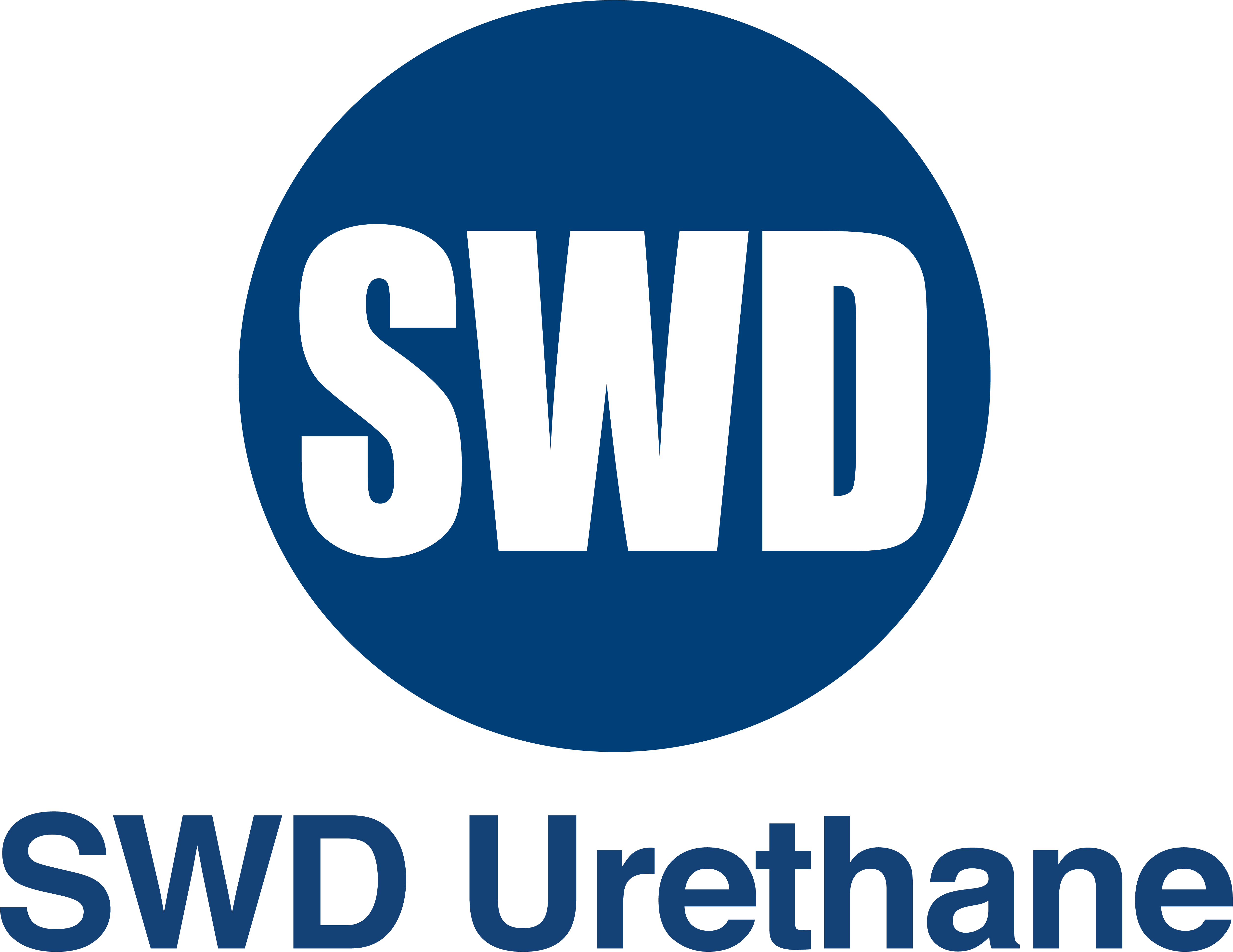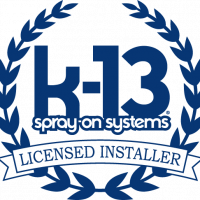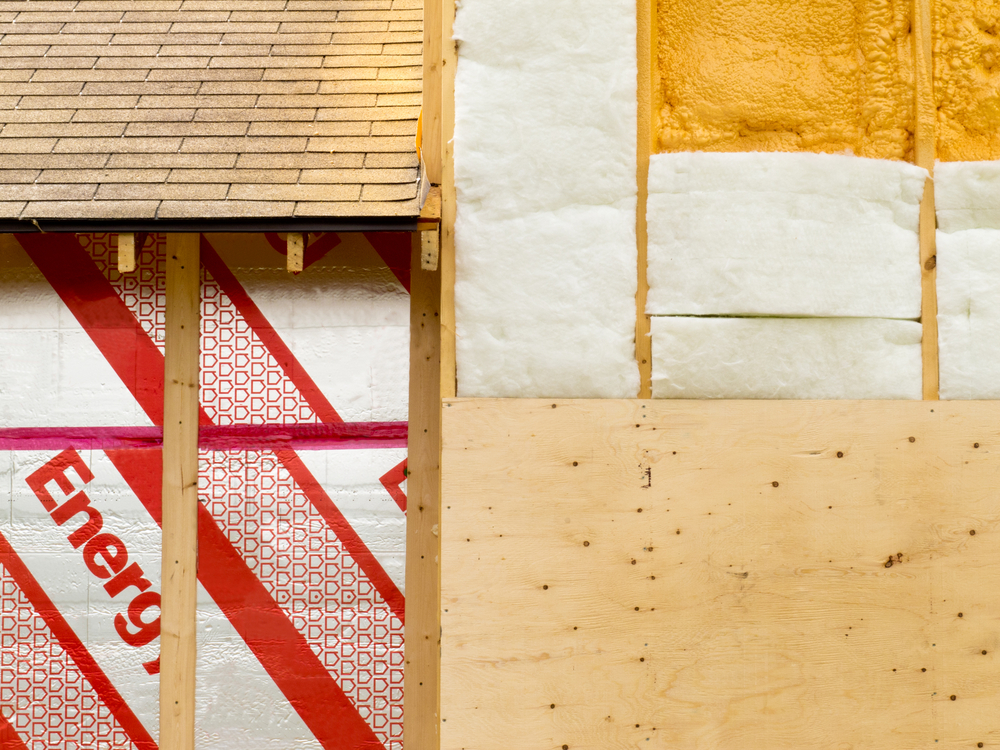
When the October skies darken and the rainy season settles over coastal California and the Sierra Nevada, homeowners face a recurring challenge: keeping their homes dry, warm, and energy-efficient. Moisture intrusion is one of the most persistent enemies of insulation, and choosing the right material can make or break your home’s comfort and structural integrity. Two common options—spray foam insulation and fiberglass insulation—perform differently when confronted with damp conditions. Understanding how each reacts to humidity, temperature swings, and prolonged exposure to moisture is essential, especially in regions where rain and snow are seasonal norms.
The Rainy Season Challenge in Coastal California and Sierra Nevada
October signals the beginning of wetter months in much of coastal California. Ocean air brings high humidity and frequent rainfall, while the Sierra Nevada experiences colder temperatures and early snow. These distinct yet equally challenging climates create a need for moisture-resistant insulation that can handle both marine dampness and mountain chill.
In coastal regions, the constant moisture in the air means that vapor can seep into walls, crawl spaces, and attics, leading to mold growth and reduced insulation performance. Meanwhile, homes in the Sierra Nevada face the additional stress of melting snow and freeze-thaw cycles, which can push water vapor through cracks and into the insulation layer. When wet insulation loses its ability to trap air effectively, energy bills rise, and indoor comfort declines.
This makes October a critical time for inspections and upgrades. Homeowners often discover that their insulation for wet climates needs reinforcement—or replacement altogether—before the heaviest rainfall begins.
Spray Foam Insulation: The Moisture-Sealing Powerhouse
Spray foam insulation is widely recognized for its air-sealing capabilities. When applied, the foam expands to fill gaps, crevices, and irregular surfaces, creating a continuous thermal barrier that also serves as a moisture and air seal. There are two main types: open-cell and closed-cell spray foam. For regions with heavy moisture, such as coastal California, closed-cell spray foam is the superior option.
Closed-cell spray foam has a dense structure that resists water absorption and prevents vapor from penetrating through walls or roof decks. This property makes it an ideal moisture-resistant insulation choice for homes exposed to salty ocean air or driving rain. In attics and crawl spaces, it helps prevent condensation and mold, while also improving the structural rigidity of walls and roofs.
In the Sierra Nevada, where snowmelt and freezing temperatures can wreak havoc on traditional materials, closed-cell spray foam maintains its integrity even in extreme cold. Its tight seal keeps warm air inside and prevents ice dams from forming on roofs, reducing the risk of water leaks. Homeowners who choose this insulation often enjoy more consistent indoor temperatures and significantly lower heating costs through the long mountain winters.
However, the benefits come with higher upfront costs. Installation requires professional expertise and careful ventilation planning. Once installed, though, spray foam insulation can last for decades without sagging or losing performance, making it a long-term solution for moisture control and energy efficiency.
Fiberglass Insulation: Affordable but Vulnerable in Wet Conditions
Fiberglass insulation has been a popular choice for decades due to its affordability, availability, and ease of installation. Typically made from fine glass fibers, it traps air to slow heat transfer. While fiberglass performs well in dry climates, its effectiveness decreases sharply when exposed to moisture.
In coastal California, high humidity levels can cause condensation to accumulate in attics or between wall cavities. Fiberglass tends to absorb this moisture, and once wet, it loses its insulating value. Damp fiberglass can also harbor mold and mildew, creating indoor air-quality concerns. The problem is compounded when vapor barriers are missing or poorly installed, allowing humid air to reach the insulation layer.
In the Sierra Nevada, the challenges are even greater. Snow accumulation on roofs can lead to leaks or ice damming, and when melted water seeps into fiberglass insulation, it compresses and clumps. Once that happens, drying it out completely is difficult, and the insulation may need full replacement. Over time, this repeated wetting and drying cycle can reduce R-values and increase energy costs.
Fiberglass can still be part of a successful insulation solution in wet regions if installed with proper vapor retarders and ventilation. Encapsulated fiberglass batts—wrapped in a moisture-resistant facing—offer better durability than loose or open batts. However, compared to spray foam insulation, fiberglass remains more susceptible to moisture intrusion, making it a higher-maintenance choice for the rainy months of October and beyond.
Comparing Moisture Resistance and Long-Term Performance
The contrast between spray foam insulation and fiberglass insulation becomes most evident under wet conditions. Spray foam’s closed-cell structure forms a near-impenetrable barrier against water and air infiltration, while fiberglass’s porous composition makes it a sponge for humidity and leaks.
For coastal California, where rain and sea air combine, spray foam offers superior protection against salt corrosion, moisture, and mold. It also helps block sound and drafts—benefits that improve comfort in windy coastal areas. In contrast, fiberglass requires consistent monitoring and may degrade faster when exposed to humid ocean air.
In the Sierra Nevada, where winter moisture is often followed by freezing temperatures, spray foam once again takes the lead. Its rigidity and adhesive nature prevent moisture from entering or freezing within wall cavities. Fiberglass, even when installed with a vapor barrier, cannot always withstand prolonged exposure to snowmelt or condensation.
Energy efficiency also plays a major role in this comparison. Spray foam provides higher R-values per inch and reduces heat loss through air leaks, while fiberglass relies heavily on perfect installation and dry conditions to reach its rated performance. Over the lifespan of a home, the energy savings from spray foam can offset its higher initial investment.
Still, homeowners should weigh their specific needs. Fiberglass may remain viable in well-ventilated spaces where moisture is controlled, such as interior walls or ceilings in drier mountain zones. For exterior walls, basements, or coastal attics, however, moisture-resistant insulation like spray foam delivers greater protection and long-term reliability.
Choosing the Right Insulation for Wet Climates
Selecting the best insulation for wet climates requires understanding local weather patterns, building materials, and long-term maintenance goals. In coastal California, homes benefit from insulation that can repel moisture and resist salt exposure. Closed-cell spray foam insulation excels in these settings, particularly for crawl spaces, attics, and exterior walls exposed to ocean air. Its ability to act as both insulation and vapor barrier makes it ideal for preventing mold and structural damage during the rainy season.
In the Sierra Nevada, insulation solutions must combat both water vapor and cold. Spray foam performs exceptionally well in these dual conditions, creating an airtight seal that prevents warm indoor air from meeting cold exterior surfaces. This minimizes condensation, protects roof structures, and helps maintain steady indoor temperatures.
Fiberglass, while less expensive, requires careful consideration. It can work effectively if paired with proper vapor barriers, good drainage, and routine inspections. Homeowners seeking to use fiberglass should ensure that all roof and wall penetrations are properly sealed and that ventilation is adequate to prevent trapped humidity.
The decision ultimately depends on balancing cost, performance, and risk tolerance. For those living in particularly damp or variable areas of coastal California or high-altitude parts of the Sierra Nevada, investing in spray foam’s durability and moisture control can pay off in comfort, energy savings, and peace of mind.
Conclusion
As October’s rains return to coastal California and snow begins dusting the Sierra Nevada, the importance of moisture management in home insulation cannot be overstated. Both spray foam insulation and fiberglass insulation have their roles, but only one provides a comprehensive shield against the relentless effects of water, humidity, and temperature swings. Spray foam, particularly the closed-cell variety, offers unparalleled moisture-resistant insulation performance, sealing out dampness and preserving indoor comfort all season long.
For homeowners preparing their properties for the rainy months, now is the time to inspect, evaluate, and upgrade. In the battle between spray foam insulation and fiberglass insulation, the winner for wet climates is clear: the material that stands firm against moisture will safeguard your home’s efficiency and structure for years to come.
Need Insulation Near You?
Since 2001, Ace Insulation Inc. has been your premier insulation experts. We take pride in being locally owned and operated as well as offering high-quality service. We specialize in the installation of insulation. Whether you are building a new home or renovating your existing space, we are the place to call. We have many materials to choose from, including fiberglass and spray foam. If you are looking for high-quality work, call us today to schedule your next consultation!
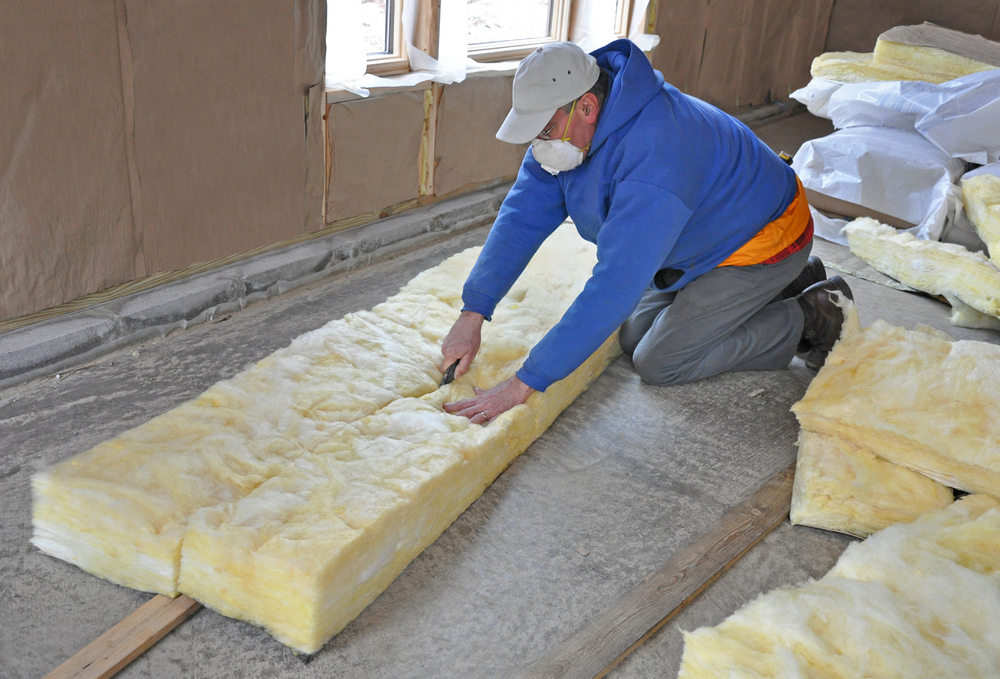
Fiberglass insulation is a commonly used material for improving energy efficiency in homes, especially in areas like attics. However, handling fiberglass insulation requires caution due to potential health hazards. In Petaluma, CA, where weather conditions fluctuate, many homeowners seek to improve their home’s insulation. This blog will provide a guide on the best practices for safely handling fiberglass insulation, with a focus on attic insulation.
Fiberglass Insulation Hazards
Fiberglass insulation is made up of fine glass fibers that, while effective for insulation, can pose various health risks if not handled properly. These hazards include:
Skin Irritation
Fiberglass fibers can penetrate the skin, causing itching, rashes, or even small cuts. The fine particles in the insulation material are sharp enough to cause discomfort when they come into direct contact with your skin.
Respiratory Issues
When fiberglass insulation is disturbed, it can release fine dust and fibers into the air. Breathing in these particles may cause throat irritation, coughing, and difficulty breathing. Prolonged exposure without proper protection can lead to more severe respiratory conditions.
Eye Irritation
The tiny glass fibers in insulation can also irritate the eyes if they come into contact with them. Redness, itching, and watering are common symptoms when fiberglass fibers get into your eyes.
Long-Term Health Concerns
Though less common, long-term exposure to fiberglass insulation may contribute to respiratory issues or lung disease. While modern fiberglass insulation is considered safer than older forms, precautions are still necessary to minimize exposure.
How to Safely Handle Attic Insulation
Given the potential hazards associated with fiberglass insulation, proper handling techniques are essential for keeping yourself safe while working in areas like the attic.
Wear Protective Clothing
One of the simplest and most effective ways to protect yourself from fiberglass irritation is by wearing appropriate clothing. Consider these protective measures:
- Long-Sleeved Shirts and Pants: Cover as much skin as possible to prevent fiberglass fibers from coming into direct contact with your skin.
- Gloves: Choose thick, durable gloves to protect your hands from cuts and irritation.
- Safety Goggles: Protect your eyes from fiberglass particles by wearing goggles that fit snugly around your eyes.
- Dust Mask or Respirator: Use a dust mask or, ideally, a respirator rated for fine particles to protect your lungs from inhaling fiberglass dust.
Prepare the Workspace
Before you begin handling fiberglass insulation in the attic, take steps to prepare the space and reduce the spread of fiberglass fibers.
- Ventilate the Area: Ensure proper airflow by opening windows or using ventilation fans. This will help reduce the concentration of fibers in the air.
- Cover the Floor: Use drop cloths or plastic sheeting to cover the attic floor and make cleanup easier. This will help prevent fiberglass fibers from settling into hard-to-clean areas.
- Seal Off Adjacent Areas: If your attic has direct access to other parts of the house, make sure to seal off doors or openings to prevent fibers from spreading into living spaces.
Use Proper Tools and Techniques
Handling fiberglass insulation requires the right tools to minimize the disturbance of the fibers and make the job more efficient.
- Use Utility Knives: When cutting fiberglass insulation to fit around obstacles or edges, use a sharp utility knife for clean cuts. A dull blade can tear the material, releasing more fibers into the air.
- Handle Gently: Avoid rough handling, which can release dust and fibers into the air. Lift and place insulation material carefully to limit disturbance.
- Bag and Seal Waste Material: Place insulation scraps and waste in heavy-duty plastic bags and seal them before removing them from the attic. This will help reduce the risk of spreading fibers through your home.
Cleaning Up After Installation
After handling fiberglass insulation, cleaning up properly is crucial to avoid the spread of hazardous fibers throughout your home. Here’s how you can clean up safely:
- Dispose of Old Insulation Properly: Many areas, including Petaluma, have specific regulations on how to dispose of insulation material. Check with your local waste management service for guidelines on disposing of fiberglass insulation.
- Vacuum with a HEPA Filter: Use a vacuum equipped with a HEPA filter to clean up any remaining fibers in the workspace. Standard vacuums may not capture all fiberglass particles and could end up releasing them back into the air.
- Wash Clothes Separately: After working with fiberglass insulation, wash your work clothes separately from other laundry. This will prevent any stray fibers from contaminating other garments.
- Shower Immediately: After handling fiberglass insulation, take a shower to rinse off any fibers that may be on your skin or in your hair. Pay close attention to exposed areas like your hands, neck, and face.
Professional Help for Insulation Installation
If you’re not comfortable handling fiberglass insulation yourself or if the job requires significant work in hard-to-reach places like attics, consider hiring a professional insulation contractor in Petaluma. Professional installers have the necessary experience and equipment to safely install insulation with minimal risk to your health and home.
Benefits of Hiring a Professional
- Expertise in Installation: A professional installer will know how to handle insulation effectively, reducing the likelihood of airborne fibers and incomplete coverage.
- Time-Saving: Installing attic insulation can be a time-consuming project. Hiring professionals can save you time and ensure the job is done efficiently.
- Proper Disposal: A professional service will also handle the safe disposal of old insulation materials, ensuring compliance with local regulations and avoiding health risks.
Finding the Right Contractor
When looking for a contractor in Petaluma, check for the following:
- Licensed and Insured: Make sure the contractor is fully licensed and insured to work in your area.
- Experience with Fiberglass Insulation: Look for contractors with specific experience in installing and handling fiberglass insulation.
- Local Reviews: Customer reviews from local homeowners can give you insight into the contractor’s reliability and quality of work.
Why Choose Fiberglass Insulation?
Despite the handling precautions required, fiberglass insulation remains a popular choice for homeowners in Petaluma. Here’s why:
Cost-Effective Solution
Fiberglass insulation is one of the most cost-effective options available. It’s affordable to install and offers long-term savings by reducing energy consumption.
Efficient Thermal Barrier
Fiberglass insulation provides excellent thermal resistance, which helps keep your home cooler in the summer and warmer in the winter. This makes it particularly valuable in Petaluma’s varied climate.
Fire Resistance
Fiberglass is naturally fire-resistant, providing an added layer of safety to your home. While it won’t prevent a fire, it can slow down the spread, allowing for additional time to address emergencies.
Eco-Friendly Option
Many fiberglass insulation products are made from recycled glass, making them an environmentally friendly choice for homeowners looking to reduce their carbon footprint.
Safely Handling Fiberglass Insulation in Petaluma
Handling fiberglass insulation in areas like attics requires careful preparation and protective measures to ensure safety. Understanding the hazards, wearing the right protective gear, and following safe handling practices can minimize your exposure to harmful fibers. If in doubt, consult a professional insulation contractor in Petaluma to ensure the job is done safely and effectively.
By taking these precautions, you can enjoy the benefits of fiberglass insulation without compromising your health or the safety of your home.
Need Insulation in Petaluma, CA?
Since 2001, Ace Insulation Inc. has been your premier insulation experts. We take pride in being locally owned and operated as well as offering high-quality service. We specialize in the installation of insulation. Whether you are building a new home or renovating your existing space, we are the place to call. We have many materials to choose from, including fiberglass and spray foam. If you are looking for high-quality work, call us today to schedule your next consultation!
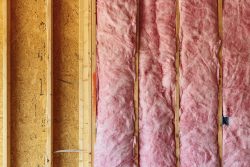 How To Safely Handle Fiberglass Insulation
How To Safely Handle Fiberglass Insulation
Insulationmade from fiberglass is a popular choice for homes. It’s safe to work with as long as you follow proper safety guidelines. Fiberglass insulation consists of tightly packed long rolls or single batts (single unrolled pieces) of spun fiberglass fibers. It provides a great thermal barrier, but it can also attract moisture and grow mold. When working with it, try to keep it dry and use a vapor barrier to keep moisture out.
The Right Equipment
When you work with fiberglass, it’s important to wear the right clothes. This includes long pants, socks and boots, a hat and a long-sleeved shirt. While this may seem like a lot of clothing, it’s essential to help protect you from skin irritation that could result from touching the material. It’s also a good idea to wear gloves. Fiberglass insulation is made from thin glass fibers that can get into your skin or eyes if you don’t wear proper protection. It can also cause respiratory problems and aggravate underlying conditions such as asthma. It’s also possible for small pieces of fiberglass to break away while you’re handling it and land in your lungs. You should wear a respirator or paper mask to prevent these particles from getting into your breathing system.
Keep The Area Clean
Whether you’re working with fiberglass insulation in the office or the home, it’s important to keep the area clean. The material can release tiny particles that look like dust but can irritate the skin and eyes. Inhalation of these particles can aggravate respiratory issues such as asthma and bronchitis. If you’re working with fiberglass insulation in the home, make sure you have an adequate amount of ventilation and a shop vacuum to help get rid of the dust. If you don’t have access to a shop vacuum, it’s a good idea to open up windows and doors to let the air circulate around the insulation and get rid of the dust. And when it’s time to dispose of fiberglass, find a local landfill that accepts building supplies or a recycling facility. Use sealable heavy-duty trash bags to prevent the insulation from blowing through the house and causing annoying drywall repairs.
Don’t Rub
When you work with fiberglass insulation, it’s important to avoid rubbing your skin. This can make it itch and lead to rashes. Keeping your hands clean with a damp cloth is also an important step in safely handling fiberglass insulation. If you’re irritated or have itchy skin, try scrubbing off any of the strands that are stuck to your body with a cold shower to clear away all the particles. If you do notice itching and burning on your skin, stop rubbing immediately. You can try laying a strip of duct tape over the area, pressing it down gently until the shards come off. The American Lung Association recommends keeping children out of areas that are prone to accumulating fiberglass shards. This includes attics, playrooms, laundry rooms and other frequently occupied areas.
Insulating your attic is a big step toward keeping your energy bills low. It also helps to keep your home warm in the winter and cool in the summer. But installing insulation yourself isn’t as simple as it seems. It’s messy, dangerous and time-consuming.
The Right Tools & Materials
Insulating your home can be an expensive, time-consuming and dangerous project. It doesn’t have to be that way if you do it right. One of the biggest reasons people don’t DIY attic insulation is they don’t have the right tools for the job. The wrong tools can lead to unnecessary fatigue, mistakes and waste. And depending on the type of insulation you use, you may also need to seal small holes around plumbing pipes and vents. Fill these with caulk or expandable foam spray. This is a good way to keep moist air from leaking into your attic and freezing inside the walls. If the gaps are larger than 3 inches, you can stuff fiberglass insulation into them to increase their R-value. If you’re going to attempt this DIY, you’ll need to make sure you’ve done your research and know how to install the insulation properly. This is because if you do it wrong, your insulation may not be as effective or it could damage the building.
The Experience
Attic insulation is an important part of any home. It can improve energy efficiency by lowering heating and cooling costs while keeping the home comfortable. However, installing attic insulation is a complex task that requires experience and specialized tools. Unless you’re familiar with all the ins and outs of insulation installation, you should leave it to a professional. In addition, removing and replacing your own insulation could put you in violation of building codes. This could negatively impact the sale of your home and cause you to pay fines or fees. Another major problem with DIY attic insulation is the risk of fires. This is because insulation may contain paper or foil that can easily catch fire if it’s not treated with flame retardants.
There’s a good chance your home doesn’t have enough insulation. If you built your house or renovated it, it’s likely that it doesn’t have enough to keep you comfortable and save on energy bills. This is especially true if you live in an area with cold winters. In these cases, poor insulation can lead to ice damming which can cause serious issues on your roof and gutters.
High Energy Bills
High energy bills are one of the biggest signs that your home is under-insulated. A home that is under-insulated forces the HVAC system to work harder to keep the home at even temperatures. If your energy bills are climbing rapidly, it’s time to investigate what might be causing it. A qualified home energy assessor can do a thermal scan of the walls to determine how well your home is insulated.A good insulation solution can be expensive, but it’s an investment worth making if your home is not well insulated.
Uncomfortable Temperatures
If your floors, walls, and ceilings are cold to the touch, you likely need more insulation in your home. Insulation stops heat and air from escaping through gaps. Another sign that your home is under-insulated is that you’re feeling warmer in one room and colder in others. This could mean that your heater isn’t keeping you as warm as it should, or that it’s not delivering enough energy to keep all parts of your house at the same temperature. Frozen pipes can also be a tell-tale sign that your home is under-insulated. If your exterior walls are poorly insulated, it can lead to pipes freezing and then bursting, which can cause thousands of dollars worth of damage.
Cold Drafts
Besides being uncomfortable, cold drafts can also cause your energy bill to skyrocket throughout the winter months. These can come from windows and doors that are not properly sealed. Insulation is a thick material that protects your home from the cold air outside. Usually, the amount of insulation required by code is enough to keep your home comfortable and save you money on energy bills, but if it isn’t, you might want to consider investing in additional insulation. You can check your windows and doors for drafts by looking at the caulking around the wood frames or the glazing that holds glass windowpanes together. If you notice cracks, it’s time to fix them. You can also stand near a door or window and feel if cold air is making its way through the cracks.
Uneven Temperatures
If you notice that some rooms are consistently warmer than others, this could indicate that your home is under-insulated. Often, this can occur when blown-in insulation settles over time or if the ductwork isn’t sized correctly. Another sign of a poorly-insulated home is ice dams during the winter. When heat rises from the roof, it melts the snow and turns it into a dam of ice that can wreak havoc on your siding and gutters. Similarly, if your pipes aren’t properly insulated in the crawl space or walls, freezing winter temperatures can cause them to freeze and burst. This can be a major pain and cost you money.
Noisy Rooms
If your rooms are noisy and you hear echoes of everything from the TV to the vacuum, your home may be under-insulated. This can make your room a stressful place to be, and can even negatively affect your health. Your home may also be noisy if you have rooms with hard surfaces like walls, floors or doors that can cause reverberation and noise transfer. Adding sound-absorbing materials or products should definitely help!



 How To Safely Handle Fiberglass Insulation
How To Safely Handle Fiberglass Insulation